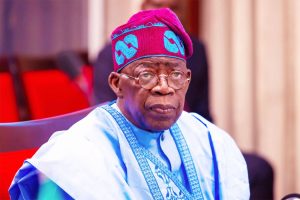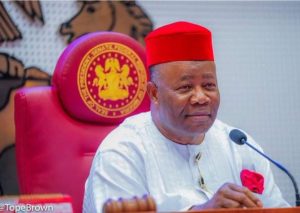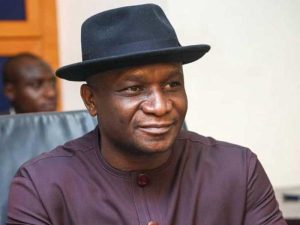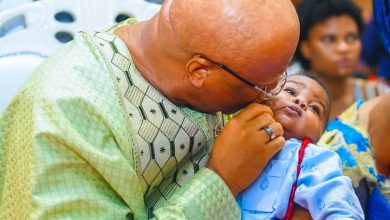
The Niger Delta has a history of non-performing institutions since the 1950s…States and Local Governments have also been unable to implement sustainable solutions to the region’s poverty. That failure was partly due to corruption, poor governance and lack of accountability. Communities, the supposed beneficiaries of the oil revenue allocations back to the region, have had little or no influence on the use or management of these funds. Clearly, the resources which have been available for the development of the region have not been used effectively – 2019 World Bank Report.
As Nigeria celebrates 25 years of uninterrupted democracy, the Niger Delta region cannot be separated from the discourse. The connection is that the Niger Delta Development Commission (NDDC), for instance, was created within the period as part of national development. Hence, one of the questions asked has to do with what percentage of the Niger Delta Master Plan may have been realised or implemented before it expired in 2020.
The Niger Delta Master Plan (NDMP), a 15-year working instrument set up in 2001, came into effect during the administration of former President Olusegun Obasanjo. It was a document to guide the multidimensional growth and development of the Niger Delta region. Its birth was a consequential response to ages of contemplation and agitations for what could be done to tackle the adverse effects of oil activities in the region.
In other words, the master plan was predicated on the Sir Wellinks Commission of 1958, a pathfinder and prototype in the discourse of the government’s deliberate intervention on the throwback effects of oil activities on the people and land of the Niger Delta region.

Arguably, the region almost singlehandedly has sustained the country since 1958. Resources generated from the region contribute immensely to Nigeria’s revenue, foreign exchange earnings and gross domestic product (GDP). Categorically, oil and gas from the Niger Delta account for approximately 80 per cent of Nigeria’s national revenue and 95 per cent of its foreign exchange earnings.
Despite its economic importance, the region faces challenges related to poverty and lack of infrastructure.
The discovery of oil in Oloibiri (formerly in Rivers State but now in Bayelsa State) in 1956 and the subsequent beginning of aggressive oil exploration and exploitation in 1958 thereof ironically crippled every initiative at diversification, and threw the entire country into condonable epidemic of the Dutch Disease. Economists describe this socio-economic malady as “a phenomenon where a country’s economy suffers negatively due to a rapid increase in income from a specific sector, often a natural resource like oil and gas.
The Niger Delta is a densely populated region of Nigeria’s oil-rich zone of the mangrove stretch traversing core states along the delta or by their cartographic and geographical proximity to the region that makes up the Niger Delta. It was previously known as Oil Rivers because it was once a major producer of palm oil, an area that was designated as British Oil Rivers Protectorate counting from 1885 until 1893 when its borders were expanded to become the Nigeria Coast Protectorate. As presently defined by the Federal Government, the region makes up about 7.5 per cent of Nigeria’s landmass. The discovery of oil had with ironic impact on other exports in the country.

The Master Plan in Details
The Niger Delta Master Plan was a regional development compass designed to direct innovative, pragmatic and sustainable actions in the Niger Delta. It was about the sixth broad-based model in the series of experiments aimed at not only compensating the Niger Delta region for her huge sacrifices in sustaining the country with its natural resources but also as an apparatus for replenishing or sustaining the regenerative capacity of the land and sea that harbour the resources.
In other words, the master plan was a legal instrument that was to direct ideas targeted at improving the lives of the people and environment of the region.
At conception, the NDMP was said to be different from the failed models before it in terms of goals, focus and approach. The logic was that it would perform better and achieve more than previous interventions. It was envisioned to be a catalyst for the realization of the shared vision and desires of the region both at individual and community levels. Areas captured in the plan included demography, environment and hydrology, agriculture, biodiversity, infrastructure and transportation. Others were rural, urban, regional planning and housing, energy, telecommunication, vocational training (with a focus on employment generation), waste management and sanitation, large-scale industry, solid minerals, tourism and social welfare.
Predecessor Models
At the International Conference on the Development of the Niger Delta Region held in Port Harcourt, the Rivers State capital, from December 10- 12, 2001, under the aegis of NDDC and UNDP, it was strongly recommended that no meaningful and compensating development would take place in the region without serious attention being given to the many socio-economic challenges in the region.
The earliest attempts at finding lasting solutions to the cyclical and adverse effects of oil exploration and exploitation through interventionist development models for the Niger Delta Region date back to the 1950s when the Sir Wellinks Commission was launched in 1958. That was approximately 62 years ago. It became a leeway to what was to become successive experiments with what would work for the region.
Three years later, in 1960, the Niger Delta Development Board (NDDB) was set up. This was followed by the Presidential Task Force on Niger Delta or “1.5% Committee” of 1980. It was replaced 17 years later by the Niger Delta Environmental Survey (NDES) of 1997. By 1992, the Oil Minerals Producing Development Areas Commission (OMPADEC) was launched. The year 2000 came with the Niger Delta Development Commission in the administration of former President Olusegun Obasanjo.
Unlike those before it, the NDDC was rooted in the Niger Delta Master Plan of 2001 which contained the conception, planning and implementation of policies for the region. To guide and effectuate that working document, former President Umaru Musa Yara’dua later created the Ministry of Niger Delta Affairs in 2008 in the heat of militancy that engulfed the area. With the late Obong Uffot Ekaette as its pioneer minister, the Ministry of Niger Delta had as a mandate “To formulate and execute plans, programmes and other initiatives as well as coordinate the intervention activities of agencies, communities, donors and other relevant stakeholders involved in the development of the Niger Delta Region”.
Read Also: Gov. Eno Solicits Stronger Partnership With NDDC
Hence, over the years, as marginal support systems to the NDDC, there came to be the Niger Delta New Vision (2016) in the administration of former President Muhammadu Buhari; Interim Management Committee- IMC (2019); Presidential Monitoring Committee – PMC (2020); and Presidential Advisory Committee – PAC (2020). On the side-line are the Niger Delta Environmental Survey (NDES), which is similar in scope and pretext to the Ogoni Clean-Up – a holistic template as ameliorative responses to the multifaceted damages oil exploration and exploitation have caused the region.
The Vision of the Niger Delta Development Commission (NDDC), in a nutshell, was “to create a lasting solution to the socio-economic challenges of the Niger Delta Region”. A line of the Mission Statement of the Commission, inter alia, reads, “To facilitate the rapid, even and sustainable development of the Niger Delta into a region that is economically prosperous, socially stable and ecologically regenerative”.
During his Independence Broadcast on October 1, 2019, President Buhari announced the withdrawal of supervision of the NDDC from of Office of the Secretary to Government of the Federation (SGF) to the Ministry of Niger Delta. The seed of that idea may have been sown in 2016 following negotiations between a pressure group in the Niger Delta, United Niger Delta Energy Development Security Strategy (UNDEDSS) and the Federal Government, represented by the late chief of staff to the President, Abba Kyari and former director-general of the Department of State Services (DSS), Lawal Daura. The then minister of Niger Delta Affairs, Mr Usani Uguru Usani, was said to have memoed the suggestion to the presidency before leaving office.

The Big Questions
Many have argued that the Niger Delta will start reaping commensurate dividends if the NDDC works, because while governments at various levels were expected to play their parts in creating an enabling environment through policies and legislations, NDDC was supposed to be the chief interpreter and executor of the vision and dreams of the region. Interestingly, it will now be tangentially supported by the newly created South-South Development Commission (SSDC).
Back in 2019, Professor Jasper Jumbo who started his career in the petroleum sector in the early 1970s as head, of Petroleum Research and Geo-environmental Analytical Laboratories at Schlumberger, is also said to have been part of the eggheads that engineered the formation of OMPADEC and NDDC, said all is not well with whatever has been formed or done over the years in the name of salvaging the Niger Delta region. Speaking to Kelvin Ebri of The Guardian Newspaper in November 2019 in an interview in Port Harcourt, titled, “Save NDDC Before it is Irretrievably Lost”, the academic was quoted to have said:
“NDDC Master Plan has been abandoned. The template is okay, but what we expect is an in-depth, progressive plan so that successive managers of NDDC will have a document to work with. If we have a good master plan for the Niger Delta, whether it is Buhari, whether it is Osinbajo, whether it is you or me, there is a blueprint for Niger Delta. ..If there is a modification, it will be within the context and ambit of what is established so that anybody can come and implement it. That is how people develop and that is why it is called MASTER PLAN”.
The Niger Delta Development Plan was therefore conceived as, or was supposed to be, a holistic template or roadmap that the Federal Government and the people can utilize in actualizing their shared vision towards the improvement of life in the region. Conversely, the master plan was designed to involve and offer critical stakeholders opportunities to contribute their quotas to the growth and development of the area largely described as robbed, cheated and neglected in gross disproportion to its unassailable contributions to the national budget and growth.
About 62 years after commercial oil exportation began in the area; 65 years after Nigeria’s Independence; 25 years after the Niger Delta Master Plan and 24 years after the establishment of the Niger Delta Development Commission (NDDC), the Niger Delta is still an experiment in absurdities, with successive leaders lacking patriotic purposefulness to implement what would have changed the narrative. The only thing too obvious that has made progress in the Niger Delta in the last six decades is corruption that constantly dominates conversations, year in, year out.




